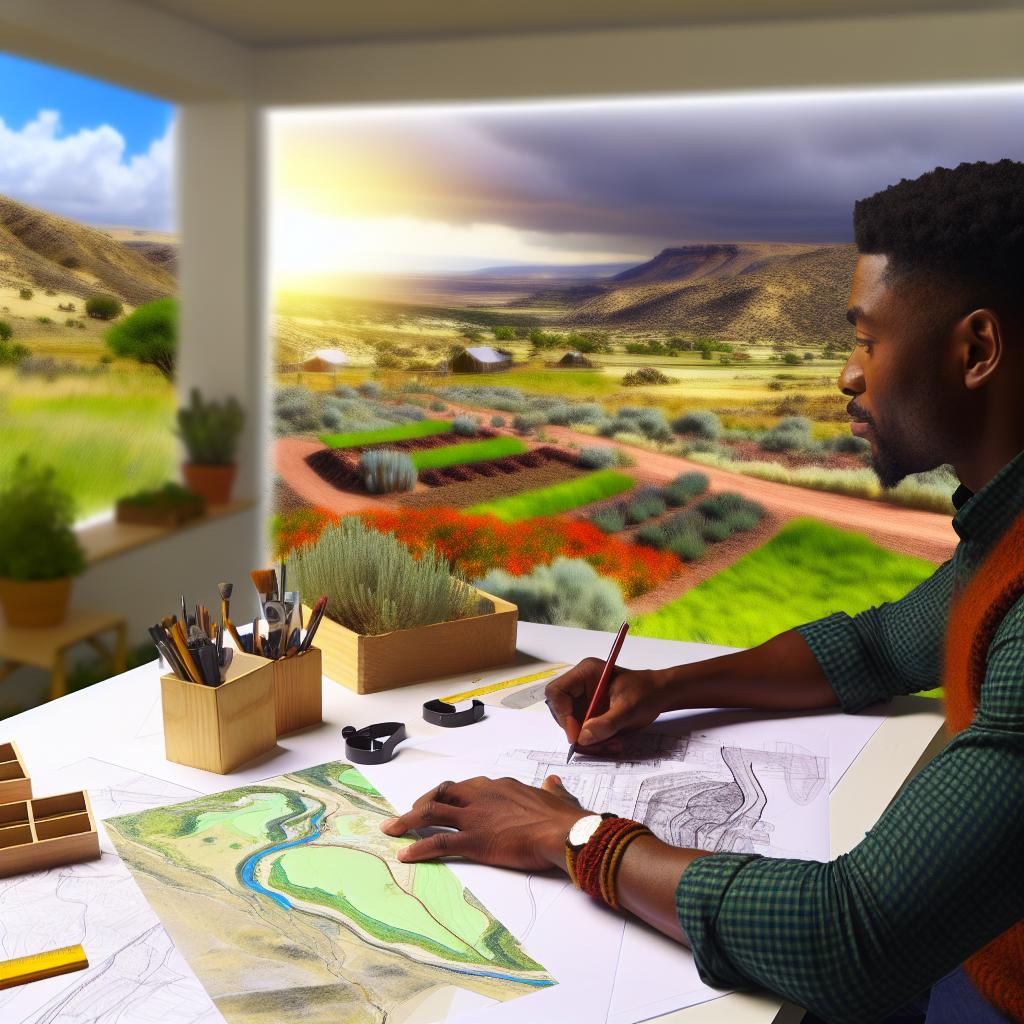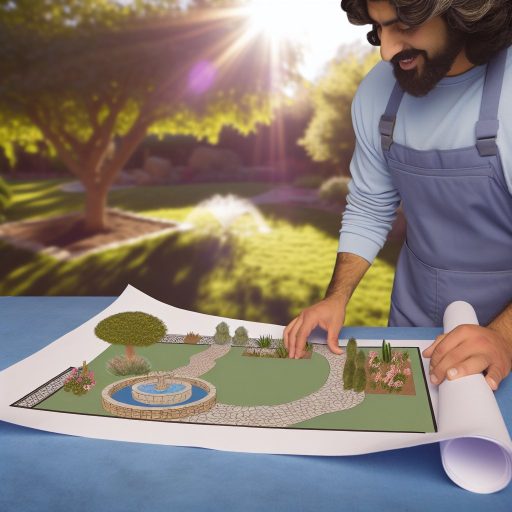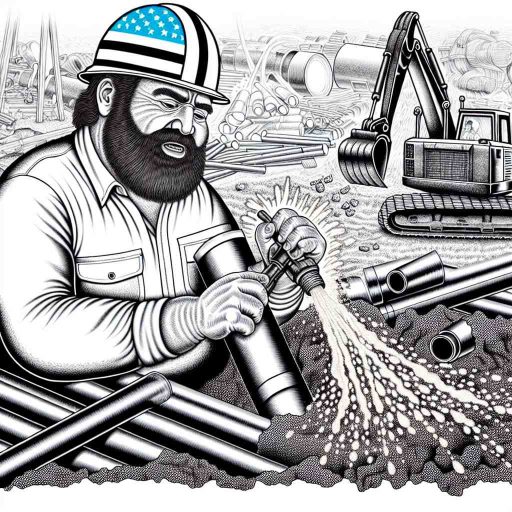Landscape Architecture and Cultural Landscapes
Landscape architecture is the design of outdoor areas to harmonize with nature.
Cultural landscapes are landscapes that have been influenced by human activity.
These landscapes hold cultural, historical, and symbolic values.
They add depth, meaning, and richness to the physical environment.
Cultural landscapes play a vital role in landscape architecture.
They provide a sense of identity, belonging, and continuity.
The relationship between people and the landscape is highlighted.
Cultural landscapes preserve traditions, customs, and heritage.
They contribute to the cultural diversity and uniqueness of a place.
In landscape architecture, cultural landscapes serve as inspiration and context.
Designing with respect to cultural landscapes ensures sustainability and authenticity.
Overall, cultural landscapes bring significance, depth, and beauty to landscape architecture.
History of Cultural Landscapes
The origins of cultural landscapes date back to ancient civilizations where nature and human activity intertwined.
Over time, cultural landscapes have evolved to reflect changes in society, technology, and environmental consciousness.
Key cultural landscapes around the world include:
- Machu Picchu in Peru, showcasing the Inca civilization’s mastery of landscape integration
- The Gardens of Versailles in France, a symbol of Baroque garden design and royal power
- Angkor Wat in Cambodia, a blend of nature and spirituality in Khmer architecture
- The Grand Canyon in the United States, a natural wonder shaped by geological processes and indigenous cultures
Principles of Landscape Architecture
Harmony: The balance of elements in a landscape creates a sense of unity and coherence.
Proportion: Proper sizing and scaling of elements ensure visual appeal and functionality.
Contrast: Differences in color, texture, and form add interest and highlight key features.
Rhythm: Repetition and patterns create a sense of movement and flow within the landscape.
Hierarchy: Organizing elements based on importance helps guide the viewer’s eye and create focal points.
Transform Your Career Today
Unlock a personalized career strategy that drives real results. Get tailored advice and a roadmap designed just for you.
Start NowThe principles of landscape architecture play a crucial role in shaping cultural landscapes.
These principles help designers create spaces that not only look beautiful but also convey meaning and tell a story.
For cultural landscapes, these principles are applied in a way that respects and celebrates the unique heritage and traditions of a particular place.
Incorporating the principles of harmony, proportion, contrast, rhythm, and hierarchy, landscape architects can design cultural landscapes that reflect the values and identity of a community.
This approach ensures that the landscape not only looks aesthetically pleasing but also serves a functional and symbolic purpose.
One example of a well-designed cultural landscape is the Gardens of Versailles in France.
Designed in the 17th century, these gardens exemplify the principles of landscape architecture in a cultural context.
The elaborate layout, symmetrical design, and careful placement of statues and fountains create a sense of grandeur and elegance that speaks to the cultural significance of the French monarchy.
Another example is the Japanese Garden in Portland, Oregon.
This cultural landscape embodies the principles of harmony and rhythm through its carefully curated elements such as bonsai trees, koi ponds, and stone lanterns.
Each element is strategically placed to create a peaceful and meditative atmosphere that reflects traditional Japanese garden design.
By applying these principles thoughtfully and creatively, landscape architects can transform ordinary spaces into meaningful places that celebrate history, heritage, and identity.
Through careful planning and design, cultural landscapes become powerful expressions of culture and community for generations to come.
See Related Content: Weather Impacts on Power Line Installation
Preservation and Conservation of Cultural Landscapes
Preserving cultural landscapes is crucial for maintaining our heritage and identity.
- Landscape architects play a key role in conservation efforts by blending design with historical context.
- They work to protect and enhance culturally significant sites while ensuring they remain functional.
- One successful conservation project is the Gardens of Versailles in France.
- It was restored to its former glory, highlighting its historical and cultural significance.
- The work done by landscape architects ensured the preservation of this iconic cultural landscape.
Another example is the Banaue Rice Terraces in the Philippines, a UNESCO World Heritage Site.
- Landscape architects collaborated with local communities to restore and maintain these ancient terraces.
- By implementing sustainable practices, they preserved this cultural landscape for future generations.
- Through careful planning and design, the terraces continue to be a vital part of the local culture.
The conservation of cultural landscapes is essential for honoring our past and shaping our future.
Discover More: Innovations in Glass Installation and Glazing Techniques
When it comes to cultural significance, landscapes play a crucial role in reflecting the values and beliefs of societies.
Exploring Cultural Values in Landscapes
Landscapes are not merely physical spaces; they are an embodiment of the history, traditions, and customs of a community.
Transform Your Career Today
Unlock a personalized career strategy that drives real results. Get tailored advice and a roadmap designed just for you.
Start NowThe way landscapes are shaped, maintained, and utilized can speak volumes about the cultural identity of a group of people.
Incorporating Cultural Elements in Landscape Design
Landscape architects have the unique opportunity to incorporate cultural elements into their designs, creating spaces that resonate with the values and beliefs of the community.
This can be achieved through the use of traditional materials, plantings, or architectural styles that hold significance to the culture.
Impact of Cultural Landscapes on Communities
Cultural landscapes have a profound impact on communities, contributing to a sense of belonging, identity, and pride among residents.
These landscapes serve as gathering spaces where community members can connect with their heritage and values.
Cultural landscapes are essential in shaping the identity of societies and fostering a sense of community among its members.
By recognizing and incorporating cultural elements into landscape design, landscape architects can create spaces that celebrate the rich heritage and traditions of a community.
Gain More Insights: Modern vs. Traditional Lumberjack Tools

Challenges in Designing Cultural Landscapes:
Designing cultural landscapes presents unique challenges for landscape architects.
These challenges can range from preserving historical significance to integrating modern amenities while respecting cultural traditions.
Identify common challenges faced by landscape architects when designing cultural landscapes:
- Preserving cultural heritage and historical significance
- Integrating modern functionalities without compromising traditional values
- Balancing environmental sustainability with cultural requirements
- Addressing community needs and preferences while respecting cultural norms
- Managing conflicting viewpoints on cultural interpretations within the landscape
Discuss ways in which these challenges can be overcome:
- Engage with local communities and stakeholders for input and feedback
- Conduct thorough research on cultural history and traditions of the site
- Collaborate with historians, anthropologists, and cultural experts in the design process
- Use sustainable design practices to merge environmental concerns with cultural requirements
- Adopt a flexible approach to accommodate diverse cultural perspectives within the landscape
Provide examples of solutions to design challenges:
One example of overcoming design challenges in cultural landscapes is the High Line park in New York City.
The park was built on a historic elevated railway line, preserving its industrial heritage while creating a vibrant urban green space.
Another example is the Gardens by the Bay in Singapore, which seamlessly blends modern architecture with traditional Asian horticultural practices.
The gardens showcase sustainable design principles while celebrating Singapore’s cultural diversity.
By addressing these challenges creatively and collaboratively, landscape architects can successfully design cultural landscapes that resonate with the past, present, and future of a specific place.
You Might Also Like: Navigating Lumberjack Job Listings Online
Cultural Landscapes as Public Spaces:
Cultural landscapes serve as integral public spaces in our communities.
These spaces play a crucial role in fostering community engagement and social interaction.
By design, cultural landscapes encourage people to gather, interact, and connect with each other.
Cultural landscapes provide a platform for various community events and gatherings to take place.
Transform Your Career Today
Unlock a personalized career strategy that drives real results. Get tailored advice and a roadmap designed just for you.
Start NowThey offer a sense of place and identity, allowing residents to feel connected to their surroundings.
The Role of Cultural Landscapes as Public Spaces:
Cultural landscapes serve as hubs for social activities and community events.
They provide a platform for people to come together and celebrate shared traditions and cultural practices.
These spaces facilitate the exchange of ideas, knowledge, and experiences among community members.
By serving as public spaces, cultural landscapes promote inclusivity and diversity within communities.
Promoting Community Engagement and Social Interaction:
Cultural landscapes encourage residents to participate in various cultural and recreational activities.
They act as meeting points for locals to interact, build relationships, and strengthen community ties.
These spaces promote a sense of belonging and pride among community members.
By offering a place for social interaction, cultural landscapes help reduce social isolation and loneliness.
Accessible and Inclusive Design in Cultural Landscapes:
It is essential for cultural landscapes to be designed with accessibility and inclusivity in mind.
Design elements such as ramps, seating areas, and clear pathways enhance the accessibility of these spaces.
Inclusive design ensures that cultural landscapes are welcoming to individuals of all ages, abilities, and backgrounds.
By incorporating universal design principles, cultural landscapes become more accommodating and user-friendly.
Cultural landscapes play a vital role as public spaces in promoting community engagement, social interaction, and inclusivity.
These spaces serve as platforms for residents to come together, share experiences, and celebrate their cultural heritage.
By embracing accessible and inclusive design, cultural landscapes can continue to foster a sense of belonging and connectivity within our communities.
Cultural landscapes play a vital role in landscape architecture.
They represent the history, values, and traditions of a community.
By integrating cultural elements into design, architects can create spaces that are not only visually appealing but also rich in meaning.
The significance of cultural landscapes lies in their ability to foster a sense of belonging, identity, and connection to the past.
Transform Your Career Today
Unlock a personalized career strategy that drives real results. Get tailored advice and a roadmap designed just for you.
Start NowThey serve as tangible expressions of a society’s heritage.
These landscapes help to preserve and transmit collective memories to future generations.
It is essential for readers to appreciate and support the preservation of cultural landscapes.
By doing so, we safeguard our cultural heritage.
We also maintain a sense of continuity with the past.
By valuing and protecting these landscapes, we ensure that they remain an integral part of our shared history and identity.
Let us all take a moment to admire and respect the cultural landscapes around us.
We should recognize the stories they tell and the significance they hold.
Together, we can contribute to the conservation and celebration of these invaluable spaces.
This effort benefits both present and future generations.
Additional Resources
Architecture (ARCH) < Temple University
Stewardship – Cultural Landscapes (U.S. National Park Service)




